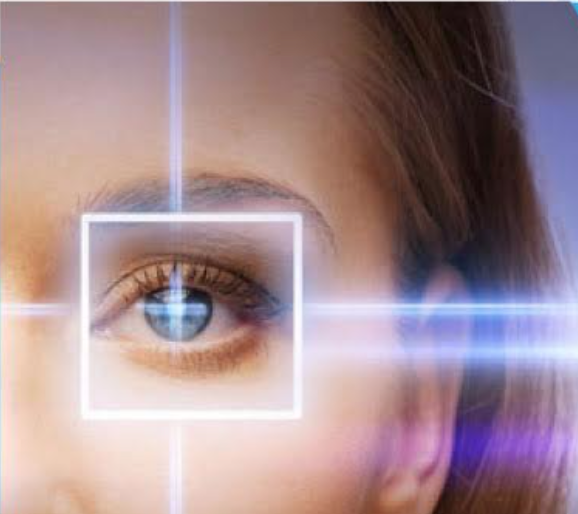The Full Break Down of Retina Disorders and Just How They Impact Your Vision
Retina disorders can interrupt this fragile process, leading to a variety of vision disabilities. By exploring the anatomy of the retina, typical problems that can influence it, their causes, signs, and offered therapy alternatives, we can gain useful understandings right into preserving and safeguarding our vision.
Introduction of Retina Makeup
The intricate framework of the retina functions as the foundation for aesthetic understanding and plays an essential duty in the procedure of converting light into neural signals for the brain to interpret. Found at the back of the eye, the retina contains numerous layers that work with each other perfectly to assist in vision. At the core of this intricate framework are photoreceptor cells referred to as cones and poles. Poles are in charge of vision in low light conditions and spotting movement, while cones are vital for shade vision and in-depth aesthetic acuity. These photoreceptor cells convert light energy into electrical signals that are then refined by various other retinal cells, such as bipolar cells and ganglion cells. The bipolar cells transfer signals from the photoreceptors to the ganglion cells, which in turn send out these signals through the optic nerve to the brain for aesthetic processing. Recognizing the elaborate makeup of the retina is fundamental in understanding how vision features and just how different retina problems can impact aesthetic assumption.

Typical Retina Disorders
Retina problems include a series of conditions that influence the elaborate framework of the eye responsible for visual handling. One usual problem is age-related macular degeneration (AMD), a leading reason for vision loss in individuals over 50. AMD impacts the macula, a component of the retina important for sharp main vision, resulting in blurriness or unseen areas in the central visual field.
One more common condition is diabetic retinopathy, occurring in individuals with diabetes. High blood sugar degrees harm the capillary in the retina, causing vision disability or blindness if left neglected. Retinal detachment is a major disorder where the retina retreats from its normal placement, creating an unexpected beginning of floaters, flashes of light, or loss of vision in a curtain-like pattern.
Lastly, retinitis pigmentosa is a team of congenital diseases that cause the breakdown and loss of cells in the retina, bring about evening blindness and a gradual constricting of the aesthetic field - eye doctors in andalusia. Understanding these usual retina problems is important in preserving vision and looking for prompt medical treatment
Reasons of Retina Disorders
Various factors add to the development of retina problems, consisting of genetic proneness, way of life choices, and underlying wellness conditions. Hereditary tendencies play a significant duty in numerous retina disorders, such as retinitis pigmentosa and macular deterioration. Individuals with a family members background of these problems are at a higher risk of developing them due to inherited hereditary mutations impacting the retina's function.
Way of life choices can additionally affect retina health. Smoking cigarettes, for example, has actually been linked to a raised danger of age-related macular degeneration, an usual retina disorder that can lead to vision loss. Poor nutritional habits lacking essential nutrients like vitamins A, C, and E, in addition to omega-3 fats, can also add to the development of retina conditions.
Diabetic retinopathy, a difficulty of diabetes mellitus, can cause damages to the blood vessels in the retina, leading to vision impairment. High blood pressure can result in hypertensive retinopathy, where high blood stress impacts the blood vessels in the retina, possibly causing vision issues.
Symptoms and Diagnosis
Offered the significant effect that causes such as genetic proneness, way of living options, and underlying health and wellness conditions can have on the advancement of retina problems, it is important to acknowledge the symptoms and utilize efficient diagnostic methods for early discovery and administration. Signs of retina conditions can differ relying on the specific condition but might consist of obscured or distorted vision, the sudden appearance of advances or flashes of light, a dark area in the facility of your vision, or a steady loss of main vision. It is essential to seek prompt clinical attention. if you experience any of these symptoms.
Diagnosing retina conditions normally includes an extensive eye examination, which might include visual skill tests, dilated eye exams, optical comprehensibility tomography (OCT), fluorescein angiography, or other imaging examinations. Your eye treatment supplier might additionally ask about your case history and any family members history of eye problems. Early detection via normal eye tests is crucial to protecting against vision loss and Resources managing retina problems successfully. Your medical care supplier will work with you to create a tailored therapy strategy to protect your vision. if detected with a retina disorder.

Treatment Choices and Administration
Therapy options for retina problems differ depending on the underlying cause and extent of the problem. In cases of retinal detachment, surgical treatments such as vitrectomy or scleral buckling might be required to reattach the retina and prevent vision loss.
Regular eye examinations and very early discovery of retina problems are important for successful administration and therapy end results. Patients with retina conditions need to work carefully with their eye doctor to create next a tailored treatment plan that addresses their specific demands and assists keep optimal aesthetic function.
Conclusion
In conclusion, understanding the anatomy of the retina, common disorders, causes, symptoms, diagnosis, and treatment options is essential in taking care of vision problems. Retina problems can significantly impact vision and high quality of life, making early detection and proper monitoring crucial. By remaining educated regarding these conditions and seeking appropriate treatment, individuals can better preserve their vision and keep overall eye health.

Understanding the elaborate composition of the retina is essential in understanding just how vision features and just how numerous retina disorders can impact visual understanding.
Retinal detachment is a major condition where the retina draws away from its typical setting, triggering an unexpected beginning of advances, flashes of light, or loss of vision in a curtain-like pattern.
Signs and symptoms of retina problems can differ depending on the certain problem however may consist of blurred or distorted vision, the sudden appearance of floaters or flashes of light, a dark spot in the center of your vision, or a gradual loss of main vision.In verdict, recognizing the makeup of the hop over to here retina, typical conditions, triggers, symptoms, medical diagnosis, and treatment options is essential in handling vision problems.
Comments on “Neurologist in Andalusia: Leading Specialists and Clinics Detailed”